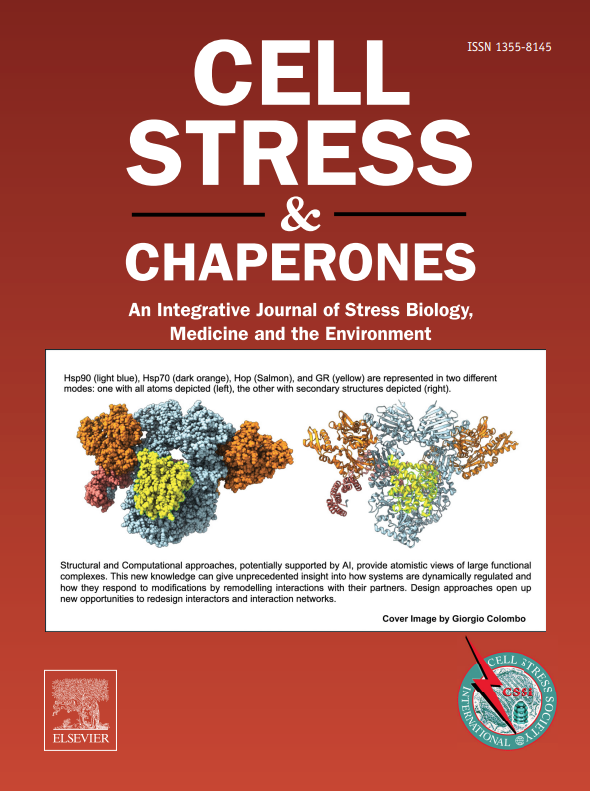Low serum HSPA12B levels are associated with an increased risk of sarcopenia in a Chinese population of older adults
IF 3.2
3区 生物学
Q3 CELL BIOLOGY
引用次数: 0
Abstract
Sarcopenia is a geriatric syndrome characterized by progressive loss of muscle mass and function. Heat shock protein (HSP) A12B is essential for angiogenesis and endothelial function. However, the association of HSPA12B levels with sarcopenia remains unclear. A total of 936 community-dwelling elderly people were recruited, and serum HSPA12B was measured by enzyme-linked immunosorbent assay. Appendicular skeletal muscle mass index (ASMI), grip strength, and gait speed were taken to assess sarcopenia. We found that serum HSPA12B levels in patients with sarcopenia (median [interquartile range] = 182.15 [137.58–225.86] ng/mL) were lower than those in elderly people without sarcopenia (228.96 [193.03–292.93] ng/mL, P < 0.001). Receiver operating characteristic curve analysis indicated that the optimal cut-off value of serum HSPA12B level for predicting sarcopenia was 185.50 ng/mL, with a sensitivity of 52.6% and a specificity of 80.8% (area under curve = 0.742, 95% confidence interval [CI] = 0.711–0.772, P < 0.001). Moreover, serum HSPA12B concentration was positively correlated with ASMI (r = 0.354, P < 0.001), grip strength (r = 0.381, P < 0.001), and gait speed (r = 0.169, P < 0.001). Multivariate logistic regression analysis showed that decreased serum HSPA12B levels (<185.50 ng/mL) were a risk factor for increased risk of sarcopenia (adjusted odds ratio = 4.335, 95% CI = 3.136–5.993, P < 0.001). In addition, serum HSPA12B level was also positively correlated with serum levels of angiogenesis markers, vascular endothelial growth factor (r = 0.080, P = 0.014), and angiopoietin-1 (r = 0.108, P = 0.001). In summary, our results indicate that low serum HSPA12B level is associated with an increased risk of sarcopenia in the elderly, suggesting a potential role of HSPA12B in the development of sarcopenia.
血清HSPA12B水平低与中国老年人肌肉减少症风险增加有关。
背景:肌肉减少症是一种以肌肉质量和功能进行性丧失为特征的老年综合征。热休克蛋白(HSP) A12B对血管生成和内皮功能至关重要。然而,HSPA12B水平与肌肉减少症的关系尚不清楚。方法:招募936名社区老年人,采用酶联免疫吸附法测定血清HSPA12B水平。采用阑尾骨骼肌质量指数(ASMI)、握力和步态速度来评估肌肉减少症。结果:我们发现,肌少症患者血清HSPA12B水平[中位数(IQR) = 182.15 (137.58-225.86) ng/mL]低于无肌少症老年人血清HSPA12B水平[228.96 (193.03-292.93)ng/mL], P。结论:综上所述,我们的研究结果表明,血清HSPA12B水平低与老年人肌少症风险增加有关,提示HSPA12B在肌少症的发生中可能起作用。
本文章由计算机程序翻译,如有差异,请以英文原文为准。
求助全文
约1分钟内获得全文
求助全文
来源期刊

Cell Stress & Chaperones
生物-细胞生物学
CiteScore
7.60
自引率
2.60%
发文量
59
审稿时长
6-12 weeks
期刊介绍:
Cell Stress and Chaperones is an integrative journal that bridges the gap between laboratory model systems and natural populations. The journal captures the eclectic spirit of the cellular stress response field in a single, concentrated source of current information. Major emphasis is placed on the effects of climate change on individual species in the natural environment and their capacity to adapt. This emphasis expands our focus on stress biology and medicine by linking climate change effects to research on cellular stress responses of animals, micro-organisms and plants.
 求助内容:
求助内容: 应助结果提醒方式:
应助结果提醒方式:


